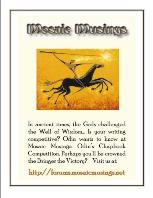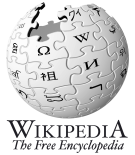 Jul 9 09, 02:25 Jul 9 09, 02:25
Post
#1
|
|
|
Group: Gold Member Posts: 66 Joined: 14-May 09 Member No.: 798 Real Name: James Carver Writer of: Poetry Referred By:poppy |
a heavenly feast
aromatic decadence when daffodils smile |
|
|
|
 |
Replies
 Jul 16 09, 07:19 Jul 16 09, 07:19
Post
#2
|
|
|
Assyrian   Posts: 201 Joined: 28-April 09 From: Canada Member No.: 784 Real Name: Marc-Andre Germain Writer of: Poetry |
I have to disagree with John on two points here:
1 - The English haiku should be under 17 syllables, but doesn't need to conform to the Japanese syllable count 5-7-5. Japanese and English are different languages, with different syntax. Pronouns and prepositional phrases in Japanese are optional in a way they couldn't be in English. Pronunciation also differs. For example, there are no diphthongs in Japanese, long vowels are formed by an additional vowel character (and therefore an additional syllable). Follow the HSA link below, then go to the collections to see modern haiku in the English language. 2 - The haiku is written by the juxtaposition of two fragments. The Japanese haiku consists of a) the kigo, i.e. a reference to season and/or time a day in the first or third line, and a two-line observation. Both the traditional Japanese haiku and the HSA make no distinction between haiku and senryu, as humans are considered to be part of nature. What matters in a haiku is the presentation of a concrete, real visual. Personification and abstract language do not belong to the haiku. The second link below is a great source of information on the haiku writing techniques. Here are some links that should be helpful: http://www.hsa-haiku.org/ http://www.ahapoetry.com/haiartjr.htm ·······  ······· ······· |
|
|
|
Posts in this topic
 hellfire HAIKU Jul 9 09, 02:25
hellfire HAIKU Jul 9 09, 02:25 
 Peggy Carpenter Harwood Hi HF,
Welcome to MM!!! It... Jul 9 09, 09:15
Peggy Carpenter Harwood Hi HF,
Welcome to MM!!! It... Jul 9 09, 09:15 
 Marc-Andre Germain QUOTE (hellfire @ Jul 9 09, 14:25 ) What ... Jul 9 09, 10:44
Marc-Andre Germain QUOTE (hellfire @ Jul 9 09, 14:25 ) What ... Jul 9 09, 10:44 
 hellfire hi peggy
thanks for welcoming me.
i have made som... Jul 9 09, 11:58
hellfire hi peggy
thanks for welcoming me.
i have made som... Jul 9 09, 11:58 
 hellfire hi mark
thanks for the info.
i am learning as i g... Jul 9 09, 12:02
hellfire hi mark
thanks for the info.
i am learning as i g... Jul 9 09, 12:02 
 Arnfinn G'day HF,
a heavenly feast
aromatic decadenc... Jul 13 09, 04:23
Arnfinn G'day HF,
a heavenly feast
aromatic decadenc... Jul 13 09, 04:23 
 Arnfinn G'day Marc,
Thank you for your remarks RE: Ha... Jul 17 09, 05:45
Arnfinn G'day Marc,
Thank you for your remarks RE: Ha... Jul 17 09, 05:45 
 Cleo_Serapis we have a discussion forum (Alexandria's Libra... Jul 19 09, 08:14
Cleo_Serapis we have a discussion forum (Alexandria's Libra... Jul 19 09, 08:14 
 prerna bala the second line confuses me , because i do not und... Jul 22 09, 05:25
prerna bala the second line confuses me , because i do not und... Jul 22 09, 05:25 1 User(s) are reading this topic (1 Guests and 0 Anonymous Users)
0 Members:
  |

|
Lo-Fi Version | Time is now: 26th October 2025 - 17:07 |




















